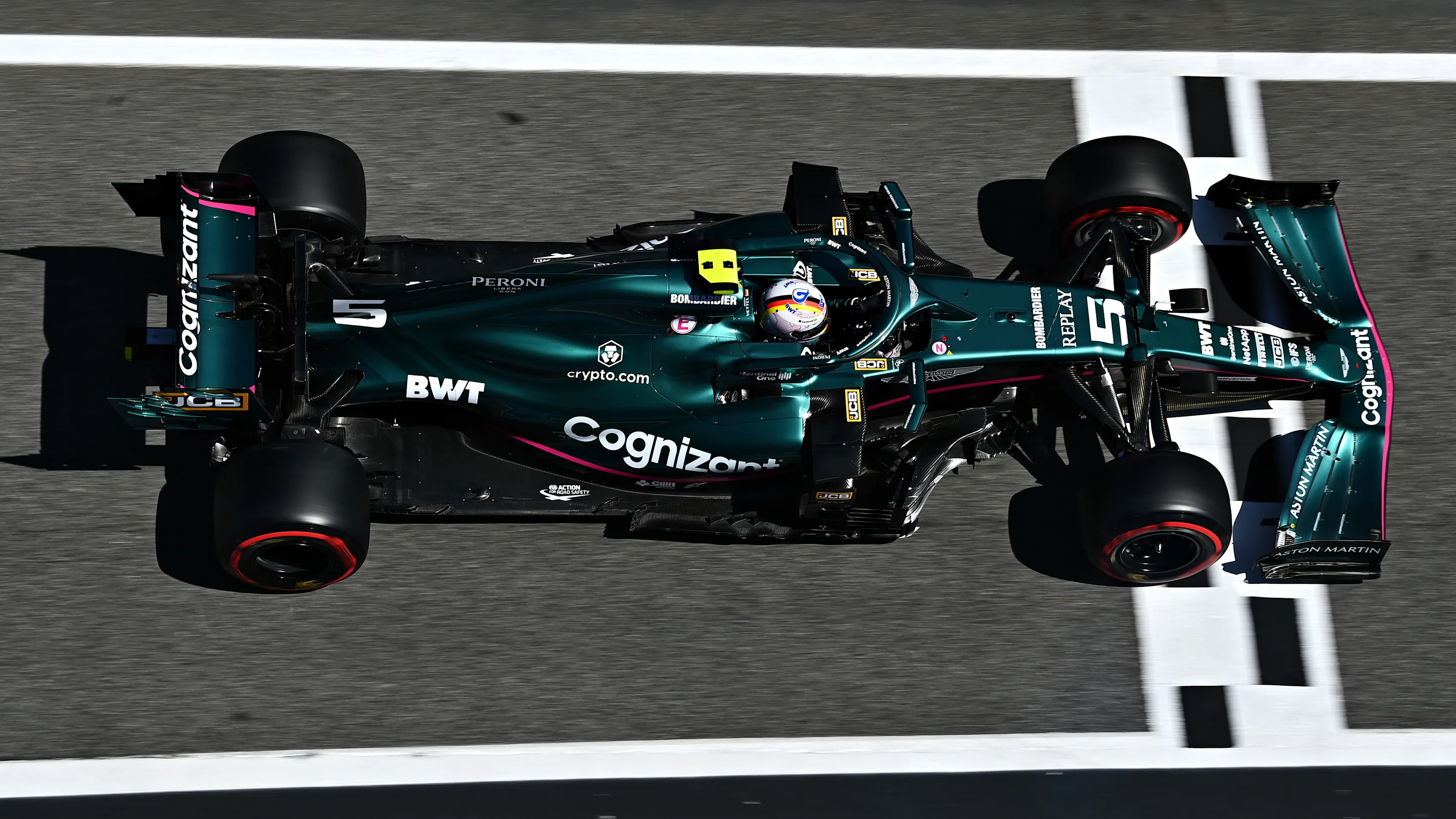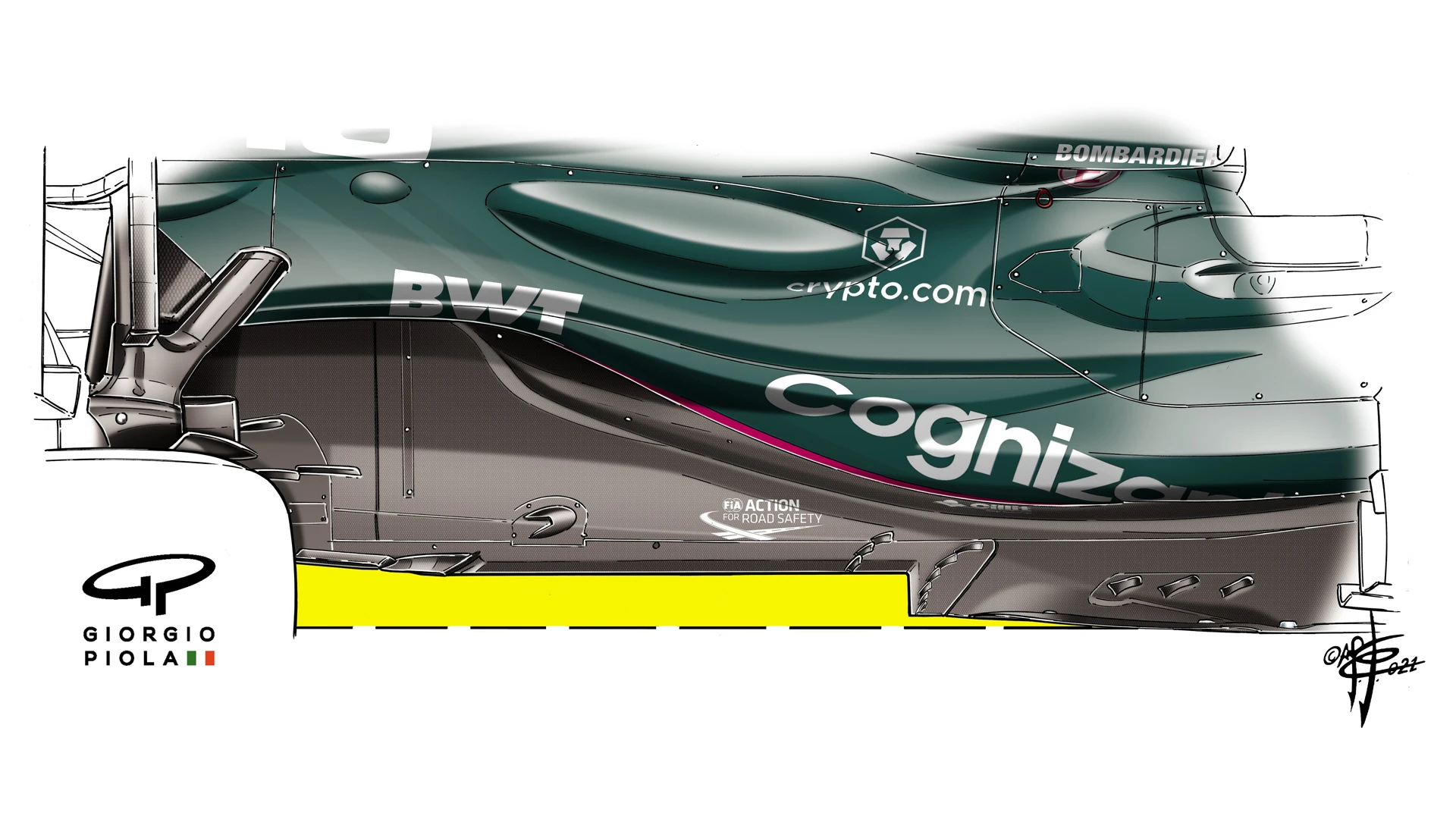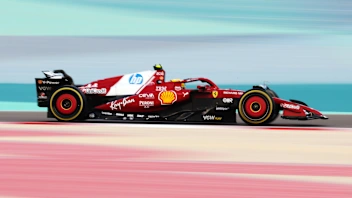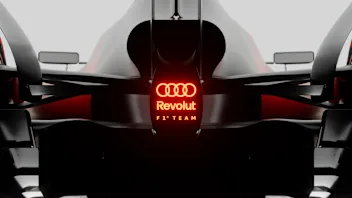TECH TUESDAY: How Aston Martin are developing the AMR21 to hit back in the midfield battle


Four races into the return of Aston Martin as a works outfit to Formula 1, and they have just five points to show for their efforts. But as Mark Hughes and Giorgio Piola explain, the team are leaving no stone unturned on the technical front in their efforts to fight their way up the order…
Although Aston Martin came away without points in Spain and the car is still hovering around the Q2/Q3 cut-off part of the grid, there is clearly immense effort being made to reclaim the losses incurred by the change of regulations into 2021. With the possible exception of the Red Bull, this is the most heavily updated car since the first race.
The combined effect of the new sidepods and engine cover introduced at Imola and the new floor, diffuser and vane details which appeared at Portimao are reckoned to be worth 0.5s per lap. But as Alpine, McLaren and Ferrari have all found performance during that time, so Aston’s position has remained relatively static.

The heart of the shortfall being attacked is the flow to the diffuser which has been made less powerful by the regulation changes, particularly on low rake cars such as this.
The regulation clipping of the winglet width atop of the rear brake ducts, combined with the halving of the length of the outer diffuser strakes, makes it especially difficult to keep airflow inboard of the rear wheel from being sucked beneath the floor and disrupting the flow there – and reducing downforce.
Joining up the flow from the brake duct winglets to the diffuser strakes is very helpful in preventing the flow being sucked sideways. Clipping their size has obviously made it less easy to join up that flow. This is especially the case on a low rake car because on a high rake car, the floor (with the diffuser) rises up further to meet the brake duct.
Aston look to be attacking the problem on two fronts. Firstly, the revamped engine cover and sidepod – the sidepod ramp much less extreme than before, and extending further backwards where it meets the floor – give a different convergence to that critical rear quarter of the car, attempting to align the flow more sympathetically to the inner face of the rear wheel and the brake duct.
The changed angle of the flow arriving at that part of the car, together with changes in the shaping of the outer diffuser strakes, will be an attempt at trying to recreate the joined-up flow between brake duct wiglets and diffuser strakes that was possible before they were clipped.
READ MORE: Discover the latest upgrades that Red Bull hope will give them championship supremacy
Secondly, sealing the floor and trying to prevent that flow from being sucked beneath at the critical place has become more important than ever – and the team is clearly focussing a lot of its attention on this. Aston – like Mercedes – launched with the Z-floor which has since become almost universal.
The outer edges of the floor form a Z around a cut-out to create a vortex which helps seal the floor and allows much of the edge’s length aft of the Z to remain straight, parallel to the central stepped section of the floor, thus making it easier to seal.

Aston has developed this floor edge continuously – with an evolution for the opening race in Bahrain with extra cut-outs in the edge forward of the Z. A yet-further enhanced version was part of the upgrade introduced on Lance Stroll’s car in Portugal and on Sebastian Vettel’s in Spain, featuring a third cut-out before the Z.
READ MORE: What is the ‘Z-shaped’ floor solution – and why are more and more teams using it?
The series of cut-outs will prepare the airflow on its way to the Z, increasing the power of its vortex. The more negative pressure being created within the underfloor, the stronger the vortex will need to be in keeping the floor sealed.
With plenty of data for the team to analyse after the Spanish Grand Prix, the upcoming races will reveal if Aston Martin’s hard work leads to them moving further up the order.
Next Up
Related Articles
.webp) What F1 drivers have been up to over the festive holidays
What F1 drivers have been up to over the festive holidays All the key pre-season dates for F1 2026
All the key pre-season dates for F1 2026.webp) Unlocked‘We have a lot of hopes’ – Vasseur on Ferrari's 2026
Unlocked‘We have a lot of hopes’ – Vasseur on Ferrari's 2026/16x9%20single%20image%20(3).webp) Exclusive‘I'm used to being thrown in the deep end’ – Lindblad
Exclusive‘I'm used to being thrown in the deep end’ – Lindblad Mercedes confirm date for first look at 2026 F1 car
Mercedes confirm date for first look at 2026 F1 car Audi complete first fire-up of 2026 F1 car
Audi complete first fire-up of 2026 F1 car